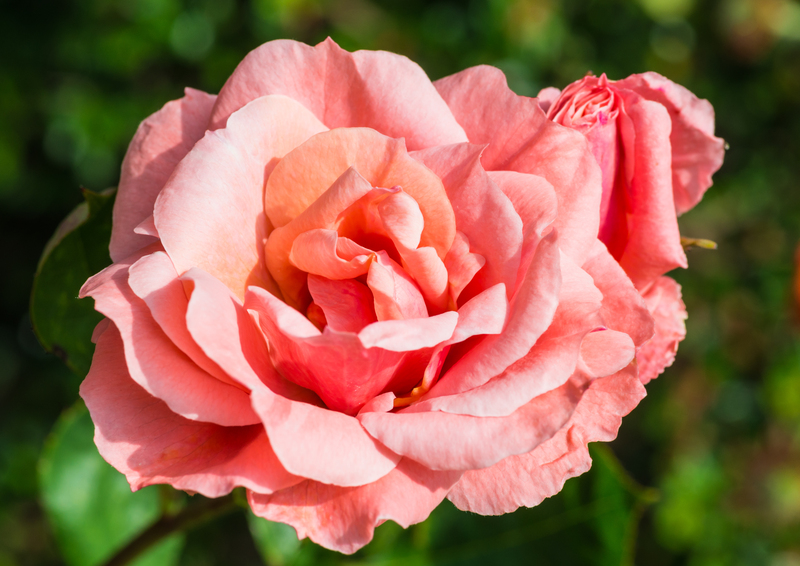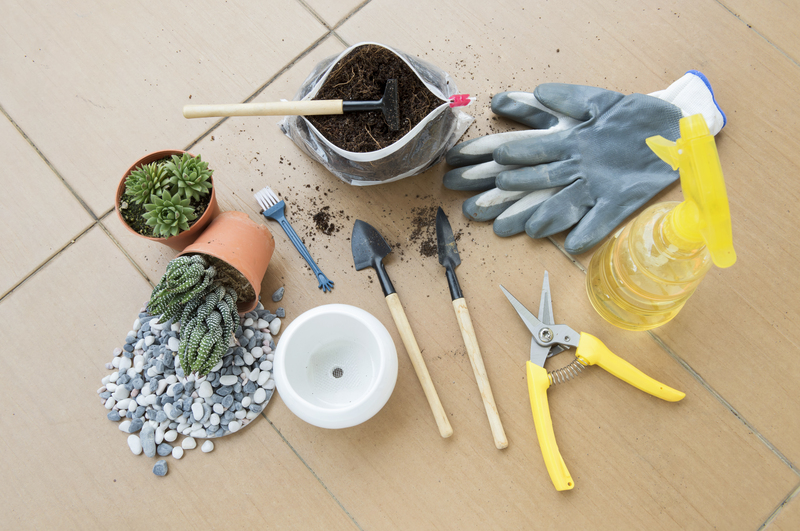Creating a Kid-Friendly Garden with Imagination and Safety
Posted on 19/08/2025
Creating a Kid-Friendly Garden with Imagination and Safety
Transforming your outdoor space into a kid-friendly garden is an exciting adventure for the whole family! Not only does it foster children's curiosity for nature, but it also creates a safe and imaginative environment where children can learn, play, and grow. In this guide, discover how to design a garden that prioritizes both safety and creativity, providing endless opportunities for fun, learning, and lasting memories.
Why a Child-Friendly Garden Matters
A child-safe garden introduces kids to the wonders of the natural world while allowing for physical activity, creativity, and relaxation. Gardens tailored for children encourage them to explore, experiment, and engage with their senses. By designing your landscape with imagination and caution, you can ensure hours of entertainment and peace of mind for parents and caregivers.

Key Principles for a Safe and Imaginative Kids' Garden
- Safety First: Use non-toxic plants, ensure secure boundaries, and avoid dangerous features.
- Interactive Elements: Incorporate sensory experiences, play features, and educational aspects.
- Accessibility: Design with children's heights, abilities, and interests in mind.
- Opportunities for Learning: Create spaces for growing food, observing wildlife, and hands-on activities.
- Easy Maintenance: Choose low-maintenance and durable materials to withstand wear and tear.
Planning Your Imaginative Kid's Garden
Assess Your Space
Begin by evaluating your outdoor area. Is it a backyard, a balcony, or a community plot? List out the available space, sunlight, and existing features. Assess potential hazards (e.g., thorny plants, uneven ground, water bodies) and plan to address them.
Involve the Kids
Engage children in the design process. Ask them what they'd love to grow or play with. Let them draw dream garden ideas or create mood boards together. Involving kids nurtures ownership, excitement, and confidence.
Designing for Fun, Exploration, and Safety
Safe Boundaries and Surfacing
- Fencing: Install solid, sturdy fencing to keep kids from wandering out and animals from wandering in.
- Gates: Ensure gates are lockable and self-closing for extra peace of mind.
- Soft Surfaces: Use bark mulch, rubber mats, or real grass to cushion falls.
- Clear Paths: Lay out winding but trip-free paths using pavers or stepping stones with non-slip surfaces.
Choosing Child-Safe Plants
When selecting plants, opt for non-toxic, low-allergy, and thorn-free varieties. Avoid plants with small berries or seed pods that could be choking hazards. Consider the following suggestions:
- Herbs: Mint, basil, chives--easy to grow, safe to touch and taste.
- Edible Flowers: Nasturtiums, violets, pansies add beauty and are safe for nibbling.
- Strawberries and Blueberries: Fun to pick and delicious!
- Sunflowers: Tall, bright, and perfect for measuring growth.
- Marigolds: Deter pests and brighten borders.
Avoid These Plants:
- Oleander
- Foxglove
- Lily-of-the-Valley
- Castor Bean
- Yew
Always check the safety of plants before adding them to your children's play garden.
Imaginative Play Features for a Magical Garden
1. Miniature Fairy or Dinosaur Gardens
Design a tiny world in a container or corner of the yard using small plants, tiny figurines, pebbles, and moss. Kids can add to this world throughout the year, letting their imagination run wild.
2. Living Hideaways
- Teepee/Tunnel of Vines: Use bamboo poles and grow fast-climbing beans or sweet peas for a leafy retreat.
- Sunflower Houses: Plant sunflowers in a circle, leaving a gap for an entrance, and fill in with tall grasses.
3. Sensory Zones
Design areas with different textures, scents, and colors:
- Touch: Lamb's ear, soft grasses
- Scent: Lavender, rosemary, lemon balm
- Sound: Bamboo chimes, ornamental grasses that rustle in the wind
- Sight: Brightly colored annuals and garden art
4. Mud Kitchen and Water Play
Install a sturdy old table and kitchen tools for a mud kitchen. Incorporate a safe water source with buckets or pumps for sensory and creative play--but always supervise water play, no matter how shallow.
5. Wildlife Stations
- Insect Hotels: Attract pollinators and teach children about beneficial bugs.
- Bird Feeders and Baths: Welcome birds and encourage nature observation.
- Log Piles: Provide homes for beetles and frogs.
Encouraging Gardening and Learning
Dedicated Planting Beds
- Raised Beds: Build small, easy-to-reach beds for kids to grow their favorite veggies and flowers.
- Container Gardening: Use colorful pots for patios and balconies, allowing for flexible gardening activities.
Let Kids Get Their Hands Dirty
Offer child-sized tools and gloves so children can dig, plant, water, and harvest. Celebrate their successes, whether it's a sprouting seed or a funny-shaped carrot. Gardening teaches responsibility, patience, and pride in accomplishments.
Composting Fun
Set up a small compost bin and explain how kitchen scraps and garden waste become food for the soil. Let children observe the transformation process--great for understanding recycling and earth science!
Garden Safety Checklist for Kids
- Safe Storage: Keep all chemicals, sharp tools, and fertilizers securely locked away.
- Supervision: Always supervise young children while they are playing or gardening.
- Allergies: Be aware of plant and insect allergies, and keep medication close by if necessary.
- Water Watch: Cover ponds or water features, and never leave children unattended near water.
- Shade & Hydration: Provide shaded areas and make sure kids have plenty of water.
Tips for Maintaining a Family-Friendly Garden
- Check play equipment regularly for splinters, rust, or instability.
- Prune back sharp or overgrown plants that could snag or poke.
- Refresh mulch, sand, or soft surfaces under swings and slides as needed.
- Monitor for new hazards as seasons (and children!) change.
Making the Garden a Year-Round Adventure
Make your kid-friendly garden an all-season destination:
- Spring: Sow seeds, spot emerging insects, watch birds build nests.
- Summer: Harvest berries, run through sprinklers, chase butterflies.
- Autumn: Collect colorful leaves, plant bulbs, jump in leaf piles.
- Winter: Track animal prints in the snow, hang bird feeders, create icy sun catchers.

Frequently Asked Questions About Children's Gardens
What is the safest surface for a kid's garden?
Soft surfaces like real grass, engineered wood fiber, or poured rubber mulch offer excellent safety for play zones, reducing injury from falls.
How do I keep pests and poisonous plants out of my garden?
Regular weeding helps, as does researching local invasive or harmful species. Install netting or barriers to protect veggie beds, and always cross-check new plants against reputable toxicity lists.
How can I get my kids more interested in gardening?
Grow fast-sprouting seeds (like radishes or sunflowers), let kids decorate their own pots, and involve them in every step from planting to harvesting. Adding creative play features, fairy gardens, or wildlife watching keeps excitement high.
Conclusion: Growing Memories and Connections
Creating a kid-friendly garden with imagination and safety is truly a gift for your children. Not only will you cultivate a shared love for nature and adventure, but you'll also offer a sanctuary for curiosity, confidence, and lifelong learning.
Take the time to plan thoughtfully, choosing child-safe plants and engaging play elements. By combining safe garden practices with whimsical, interactive spaces, you'll empower children to flourish side by side with your garden--all while ensuring peace of mind.
*Start your journey today and watch your outdoor space blossom into a magical haven for your entire family!*

